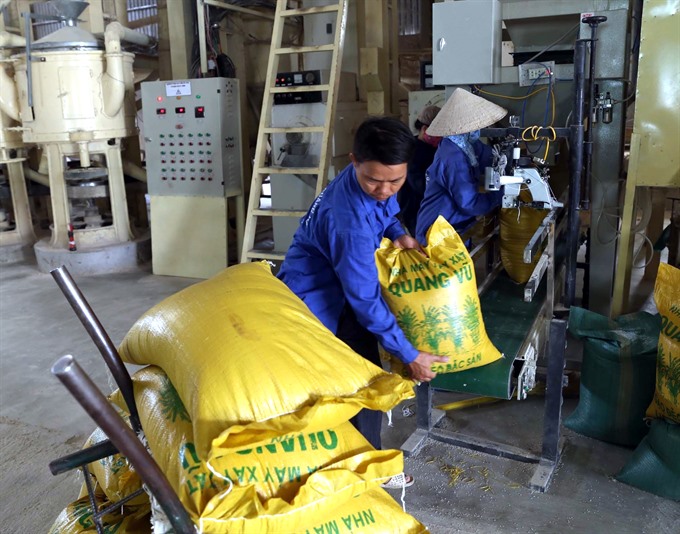 Economy
Economy

Việt Nam expects rice exports to regain strength by the end of the year after a brief lull, said Trần Văn Công, deputy director of the Agro Processing and Market Development Authority under the Ministry of Agriculture and Rural Development.
 |
| A worker moves rice bags at a private agricultural processing company in Phước Lộc Commune, Tuy Phước District, Bình Định Province. — VNA/VNS Photo Vũ Sinh |
HÀ NỘI — Việt Nam expects rice exports to regain strength by the end of the year after a brief lull, said Trần Văn Công, deputy director of the Agro Processing and Market Development Authority under the Ministry of Agriculture and Rural Development.
Over the first nine months of this year, Việt
Công said that this is an impressive result, attributing the achievement to the effective rice sector restructuring programme which focuses on developing high-quality and fragrant rice to bolster exports to choosy markets.
Up to 80 per cent of exports now are classified as high-quality rice and sold at more than $500 per tonne, he said, adding that market diversification has been a catalyst for Vietnamese rice shipments.
The price of sticky rice has also increased from just below $400 per tonne in July and August, to $440 per tonne now. Furthermore, as local firms reduce export costs, Vietnamese rice will gain a competitive edge over that grown in
In the coming time, purchase demand will is forecast to pick up in some countries, such as the
Besides, the Government’s new Decree 107/2018/NĐ-CP replacing Decree 109/2010/NĐ-CP, which takes effect from October 1, will remove difficulties and legal barriers for rice exporters to expand their foreign markets.
According to the decree, rice exporters will no longer be required to own rice storage, paddy milling and grinding facilities with processing capacities of 5,000 tonnes of rice. In addition, customs procedures will be simplified, creating favourable conditions for enterprises to export more to large consuming markets like
Phạm Minh Thiện, general director of Cỏ May Co Ltd, said many provisions on rice export have been modified to suit the development of enterprises. It has created more favourable conditions for businesses to enter the market and to reduce costs significantly.
The amendments to the Decree 109 which was issued eight years ago will promote businesses and farmers to put more investment in the production and trading of high-quality rice. Farmers are encouraged to supply high-value rice for rice exporters. — VNS




